39 newton's laws of motion worksheet
NAME _____ NEWTON'S LAWS WORKSHEET. I. NEWTON'S FIRST LAW OF MOTION 1. Newton's first law of motion is also known as the LAW OF _____. 2. Newton's first law says that a. an object that IS NOT MOVING, or is at _____, will stay at ... Newton's third law of motion states : _____ _____ Instructions: Each of the items below is best represented by one of the Newton's Laws of Motion. Write a 1, 2 or 3 for each of the following to indicate whether it's Newton's 1st, 2nd or 3rd law.
Some of the worksheets for this concept are Miscellaneous newtons 3 laws of motion, Topic 4 dynamics force newtons three laws and friction, Newtons laws of motion, Forces newtons laws of motion, Newtons laws of motion, Activity demonstrating newtons laws of motion burleson, Chapter 5 newtons laws force and motion, Kepler newton and laws of motion.

Newton's laws of motion worksheet
Start studying Newton's Laws of Motion Worksheet. Learn vocabulary, terms, and more with flashcards, games, and other study tools. While the direction of the pushes (or pulls) is opposite, the strength or magnitude is equal. This is sometimes stated as Newton's Third Law of motion: for every action, there is an equal and opposite reaction . A force is a push or a pull and it always results from an interaction between two objects. These forces always come in pairs. 1. Newton's Laws of Motion Worksheets (MCQ) - 3 sets with answer Newton's First Law - MCQ Worksheet (with answer) Newton's first law of motion states that an object's motion will not change unless a. the net force acting on it is greater than zero. b. a force continues to be applied to the object. c. its inertia is stronger than the applied force.
Newton's laws of motion worksheet. Introduce your science students to Issac Newton's Laws of Motion with this science text worksheet packet. Your students will read and analyze the science text to learn about Newton's balanced and unbalanced forces, inertia, mass, acceleration, action, and reaction forces through the first, second, a Subjects: NEWTON'S LAWS WORKSHEET I. NEWTON'S FIRST LAW OF MOTION 1. Newton's first law of mo2on is also known as the LAW OF _____ 2. Newton's first law says that a. an object that IS NOT MOVING, or is at _____ will stay at _____ AND b. an ... Displaying top 8 worksheets found for - Newtons Laws Of Motion. Some of the worksheets for this concept are Newtons laws work, Newtons laws of motion work, Name period date newtons laws of motion, Lesson physical science review of newtons laws of, Newtons laws work, Newtons laws of motion, Review work, Energy fundamentals lesson plan newtons first law. Newton's Laws of Motion 1. An object in motion tends to stay in motion and an object at rest tends to stay at rest unless acted upon by an unbalanced force. 2. Force equals mass times acceleration (F = ma). 3. For every action there is an equal and opposite reaction.
Newton's first law of motion Key Stage 3 and GCSE worksheet on Newton's first law of motion. Students identify and label forces acting on a tennis ball that has been hit by a racket. Many will mistakenly think there is a force acting in the direction of motion. Of course there is not, only air resistance and weight are acting. ( PDF) Newton's Third Law of Motion - His Second Law of Motion adds that the force acting on an object is equal to the mass of that object times its acceleration. Newton's Third Law of Motion builds upon these first two, adding that for every action, there is an equal and opposite reaction. Print Newton's Laws of Motion Worksheets Click the buttons to print each worksheet and associated answer key. Newton's Contributions to Physics Physics is the study of matter and motion, including how matter and motion behave with regards to energy and forces. (A) Newton's first law (B) Newton's second law of motion (C) Newton's third law of motion (D) none of the above. 8. A book of weight 10 N is placed on a table. The force exerted by the surface of the table on the book will be: (A) Zero (B) 10 N (C) 20 N (D) None of these. 9. A ball of mass 500g is moving with speed of 36km/hr.
Newton's Laws of Motion Review Worksheet. Directions: Fill in the information below. Newton's First Law of Motion. Newton's first law of motion is also known as the Law of . Newton's first law says that an object that IS NOT MOVING, or is at _____, will stay at _____, and an object that IS MOVING will keep moving with constant _____, ... NEWTON'S LAWS WORKSHEET - KEY I. NEWTON'S FIRST LAW OF MOTION 1. Newton's first law of mo2on is also known as the LAW OF INERTIA 2. Newton's first law says that a. an object that IS NOT MOVING, or is at AT REST will stay at AT REST AND b. an object that IS MOVING will keep moving with constant VELOCITY which means at the same SPEED and Newtons second law of motion problems key displaying top 8 worksheets found for this concept. It is the acceleration of an object produced by an action or force which is directly proportional to the magnitude of the net force in the same direction and inversely proportional to the object mass. Newton s second law of motion 7. Newton's Laws of Motion. Match Newton's Laws with the description. Newton's First Law of Motion. The force of an object is equal to its mass multiplied by its acceleration. Newton's Second Law of Motion. For every action, there is an equal and opposite reaction. Newton's Third Law of Motion. An object at rest will stay at rest, and an object in ...
NEWTON'S LAWS OF MOTION Background: • Aristotle believed that the natural state of motion for objects on the earth was one of rest . In other words, objects needed a force to be kept in motion. • Galileo studied motion of objects rolling down an inclined plane with smooth surfaces. He

Into the Veil! Mosaic of the entire Veil supernova complex with the Eastern Veil to the left (Klingon bird of prey!), the Pickering Triangle in the middle and the Western Veil to the right (the Witch’s broom)
Newton's third law of motion states that: For every action, there is an equal and opposite reaction. This means that in every interaction, there is a pair of forces acting on the two participating objects. Here action is the ball thrown on the ground …The ball bounces back is the reaction.
Newton's Laws of Motion worksheets and online activities. Free interactive exercises to practice online or download as pdf to print.
Support student learning of physics with this Newton's Laws of Motion Foldable Activity. Print this resource and distribute it to students with scissors and glue for a fun activity. Students will cut out the description cards and definitions and match them with the correct law of motion. This would be a great independent or small group activity. This resource can be used as a ...
Introduce and teach your students about Newton's 2nd law of motion with this force and motion worksheet. Students will use the science text to read and answer questions about Newton's second law of motion; force = mass x acceleration. Students will also practice Newton's 2nd law through word problem Subjects:
Newton's first law! Isaac Newton first proposed the following law of nature to attempt to describe objects in motion 1687 " Every object continues either at rest or in constant motion in a straight line unless it is acted upon by a net force " the statement about objects at rest is pretty obvious, but the "constant motion" statement ...
Newton's Laws of Motion Challenge Print the PDF: Newton's Laws of Motion Challenge Use this challenge worksheet as a simple quiz to see how well students recall what they've learned about Newton's laws of motion. Each description is followed by four multiple choice options. Newton's Laws of Motion Draw and Write
Newton's 2nd Law Unbalanced forces cause an object to _____. This can be stated mathematically by the formula: Newton's 3rd Law Every action produces an equal and opposite _____. When one object exerts a force on another object, the second object pushes back with the same amount of _____. Part II: Use Newton's 2nd Law of motion to solve ...
NEWTON'S LAWS OF MOTION If I am anything, which I highly doubt, I have made myself so by hard work. - Isaac Newton Goals: 1. Students will use conceptual and mathematical models to predict and understand patterns in motion. (3.1.10.B-C) 2. Students will be able to apply Newton's laws of motion to solve problems related to forces and mass.
ID: 2281160 Language: English School subject: Physics Grade/level: 9-12 Age: 14-18 Main content: Newton's Laws Other contents: Newton's Laws Add to my workbooks (11) Embed in my website or blog Add to Google Classroom
Worksheet Newton S Law Of Motion Worksheet by Hedvig on March 26, 2021 Newton s first law of motion explains that objects in motion stay in motion. Catered to the fifth grade curriculum this science worksheet encourages kids to use their new knowledge to answer short challenge questions.
Newton's Laws of Motion Worksheets (MCQ) - 3 sets with answer Newton's First Law - MCQ Worksheet (with answer) Newton's first law of motion states that an object's motion will not change unless a. the net force acting on it is greater than zero. b. a force continues to be applied to the object. c. its inertia is stronger than the applied force.
While the direction of the pushes (or pulls) is opposite, the strength or magnitude is equal. This is sometimes stated as Newton's Third Law of motion: for every action, there is an equal and opposite reaction . A force is a push or a pull and it always results from an interaction between two objects. These forces always come in pairs. 1.
Start studying Newton's Laws of Motion Worksheet. Learn vocabulary, terms, and more with flashcards, games, and other study tools.
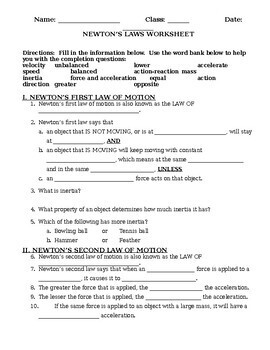
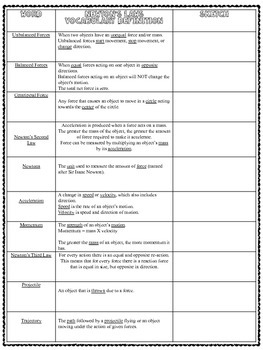




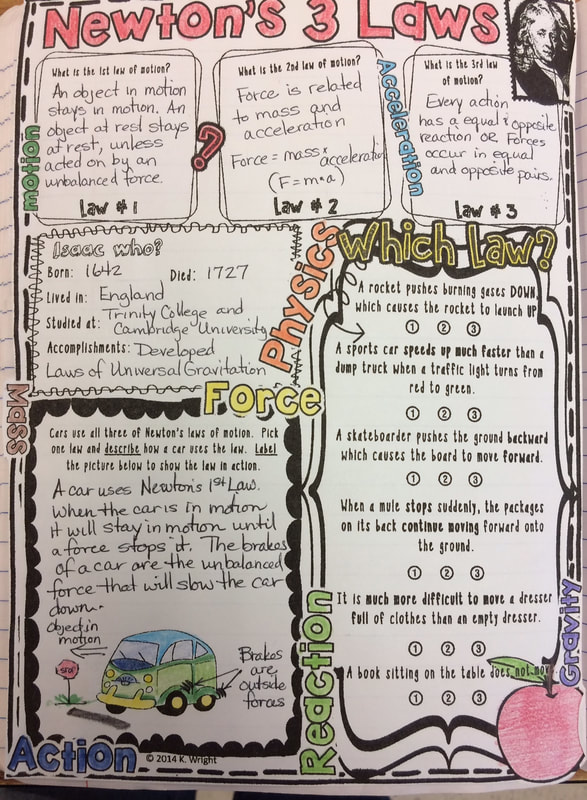


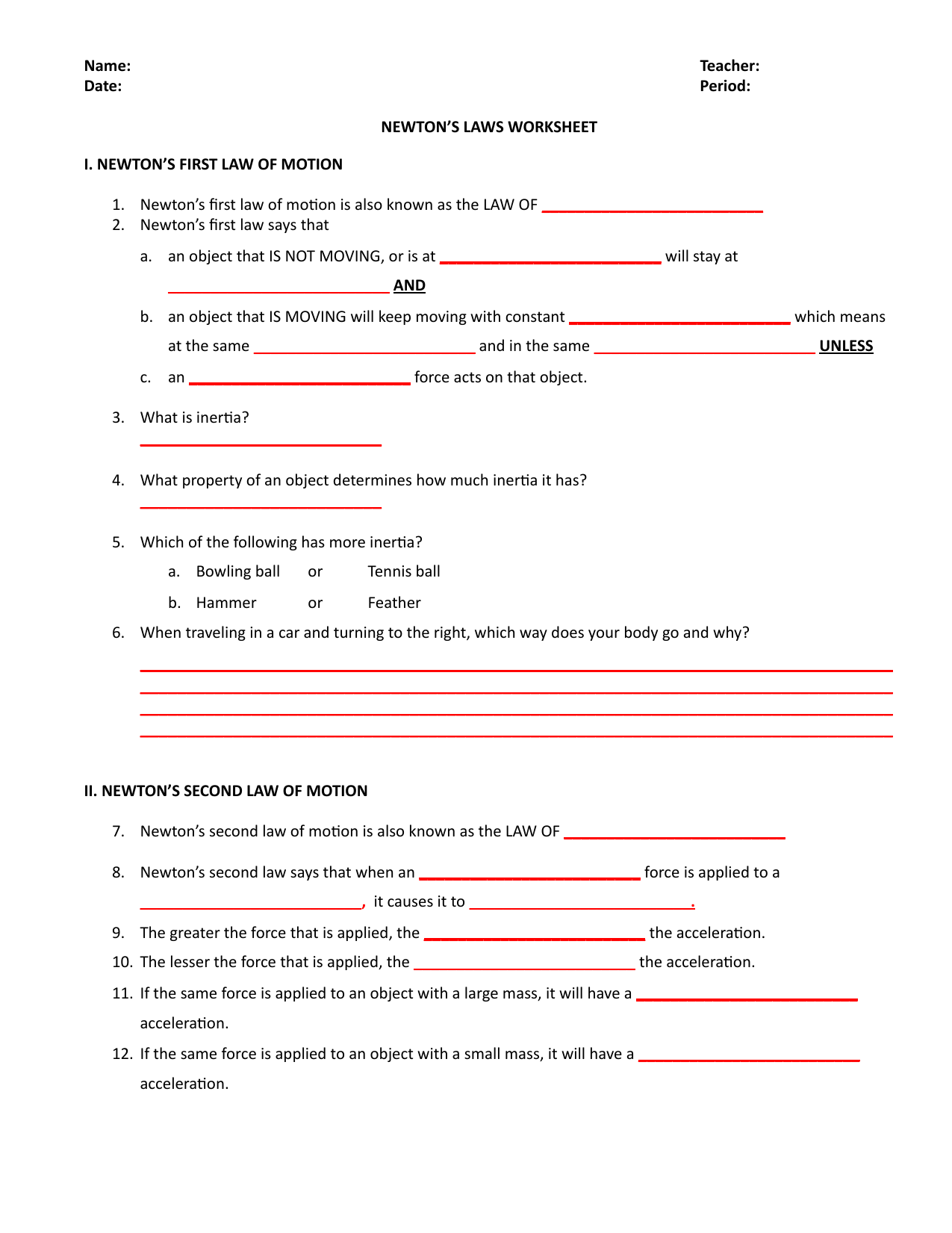
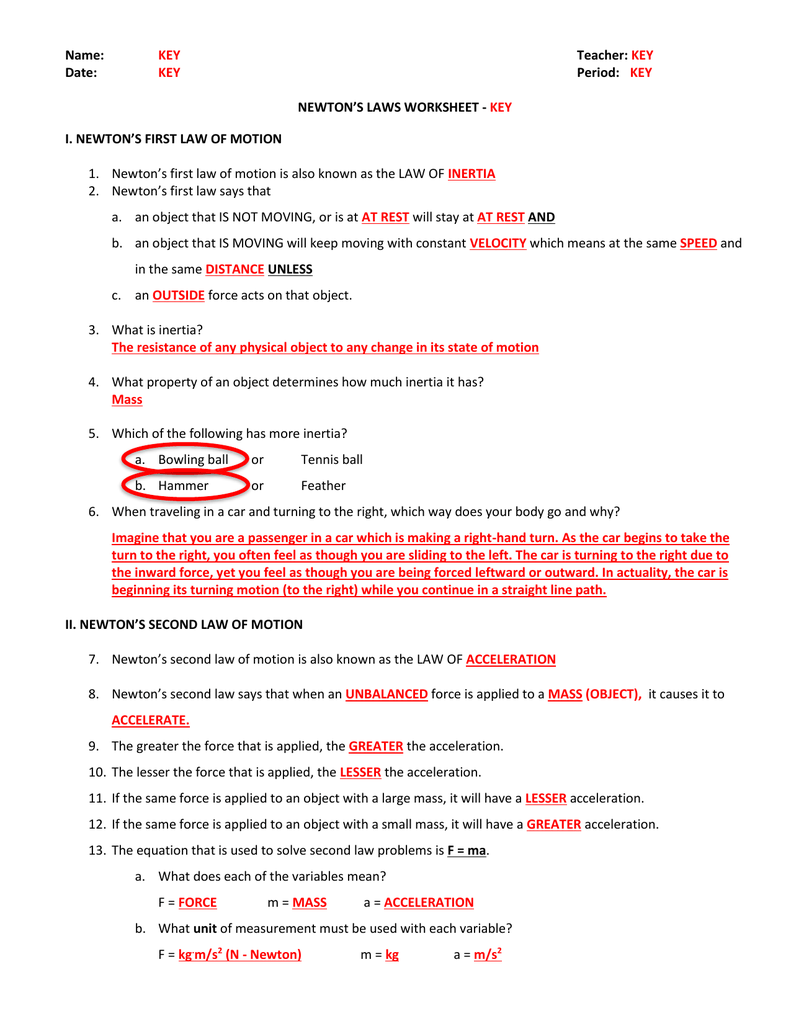

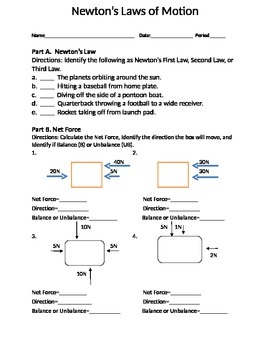



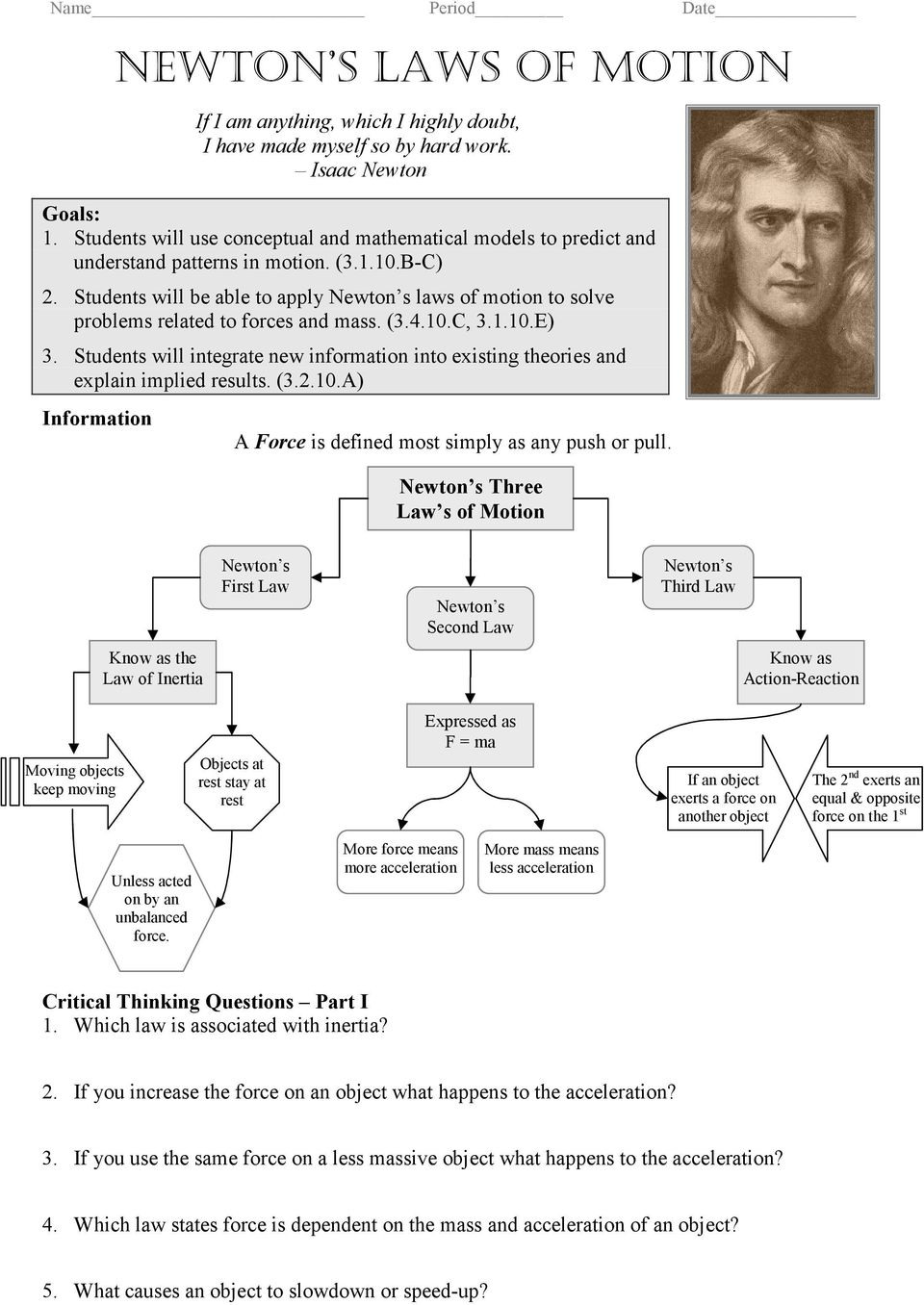
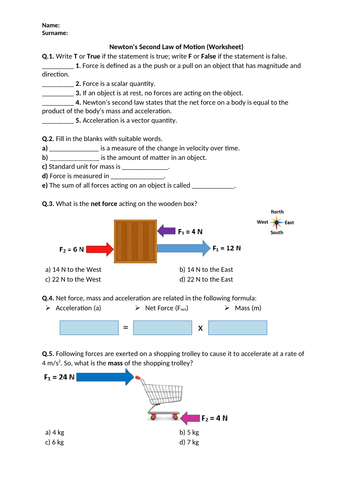


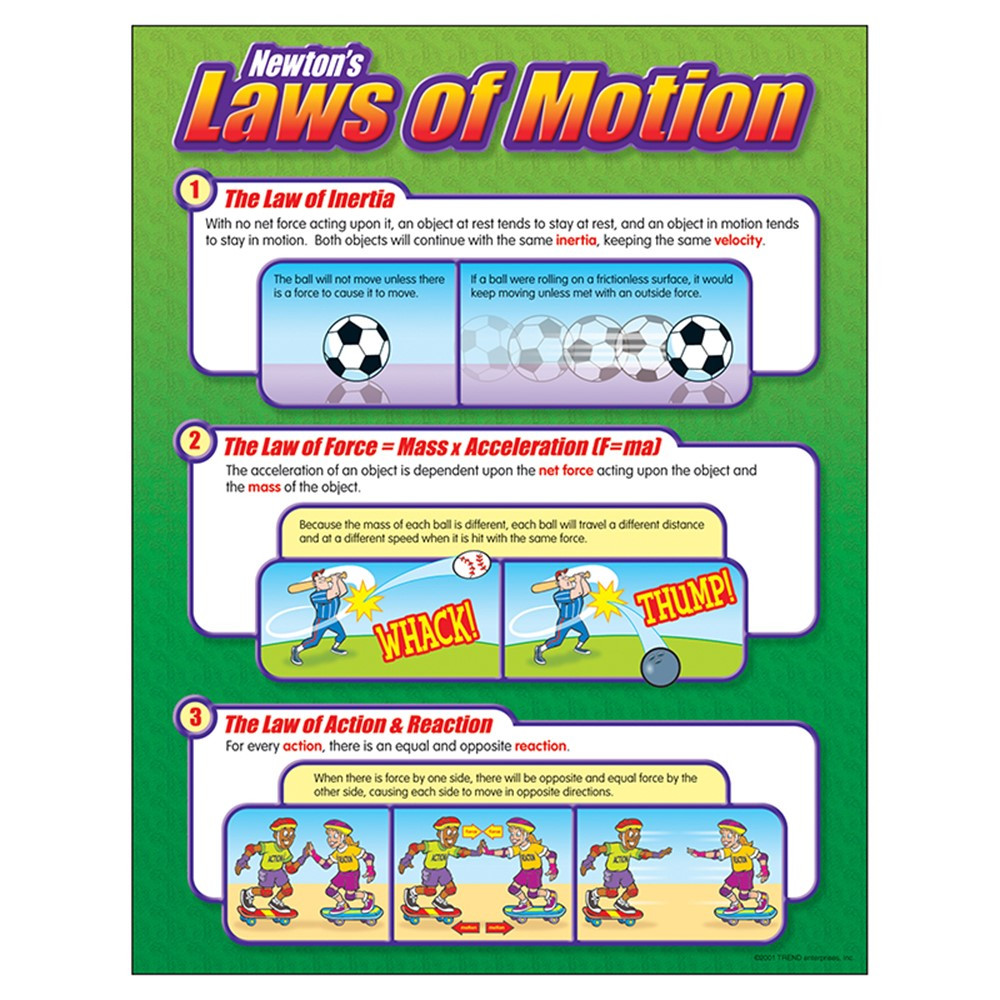



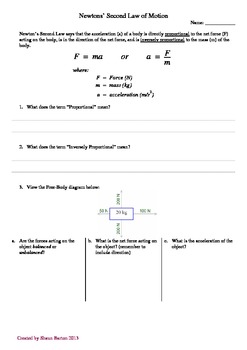


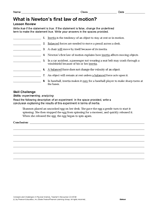


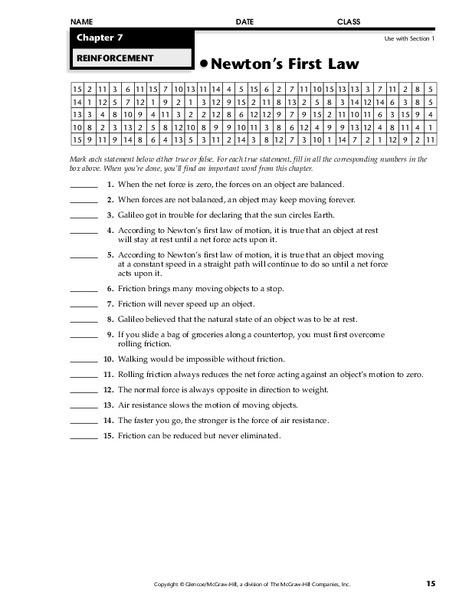



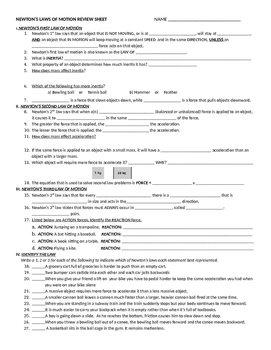

0 Response to "39 newton's laws of motion worksheet"
Post a Comment